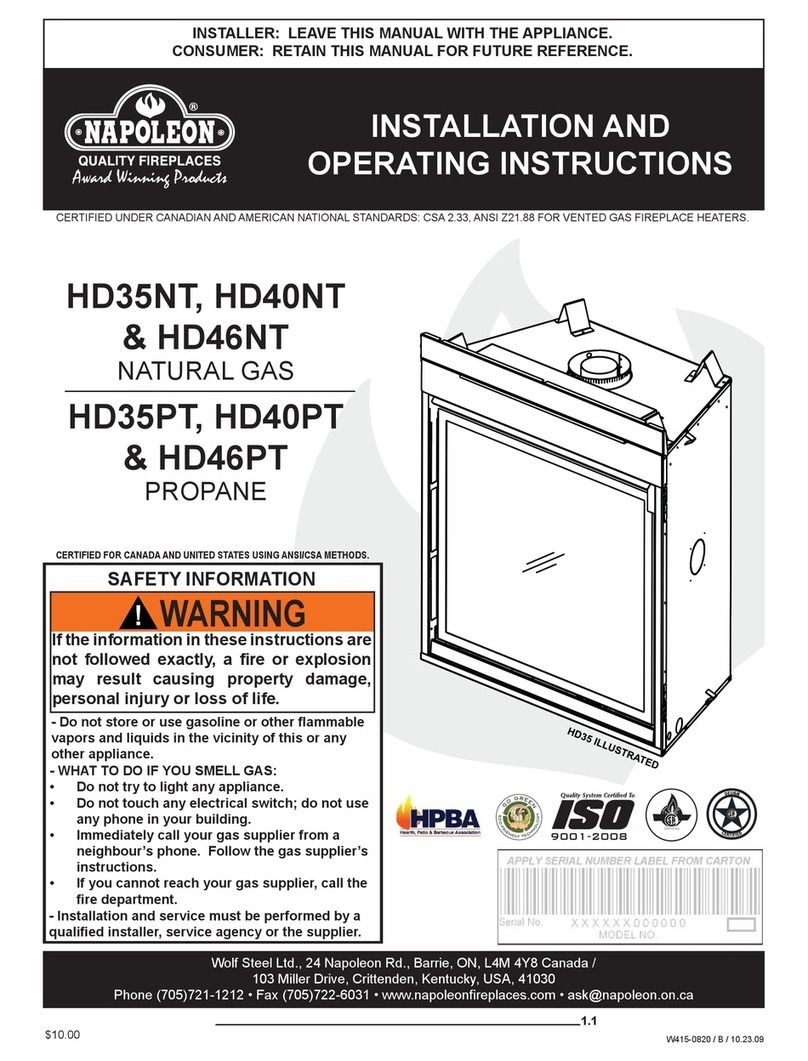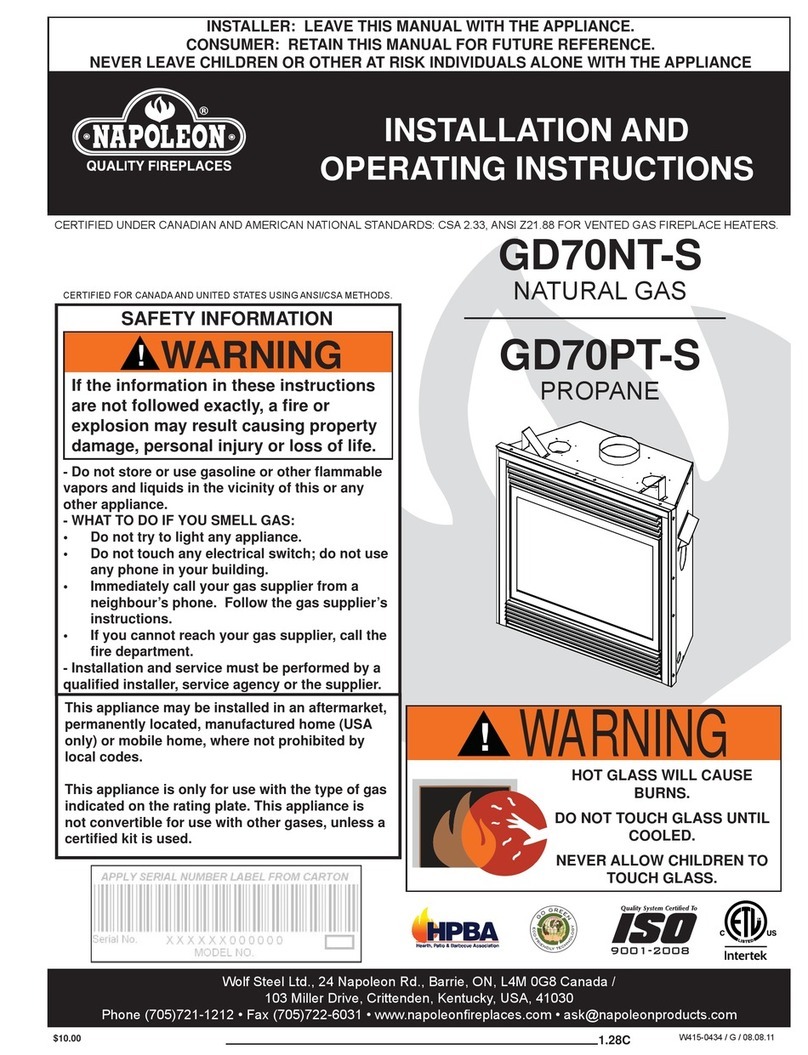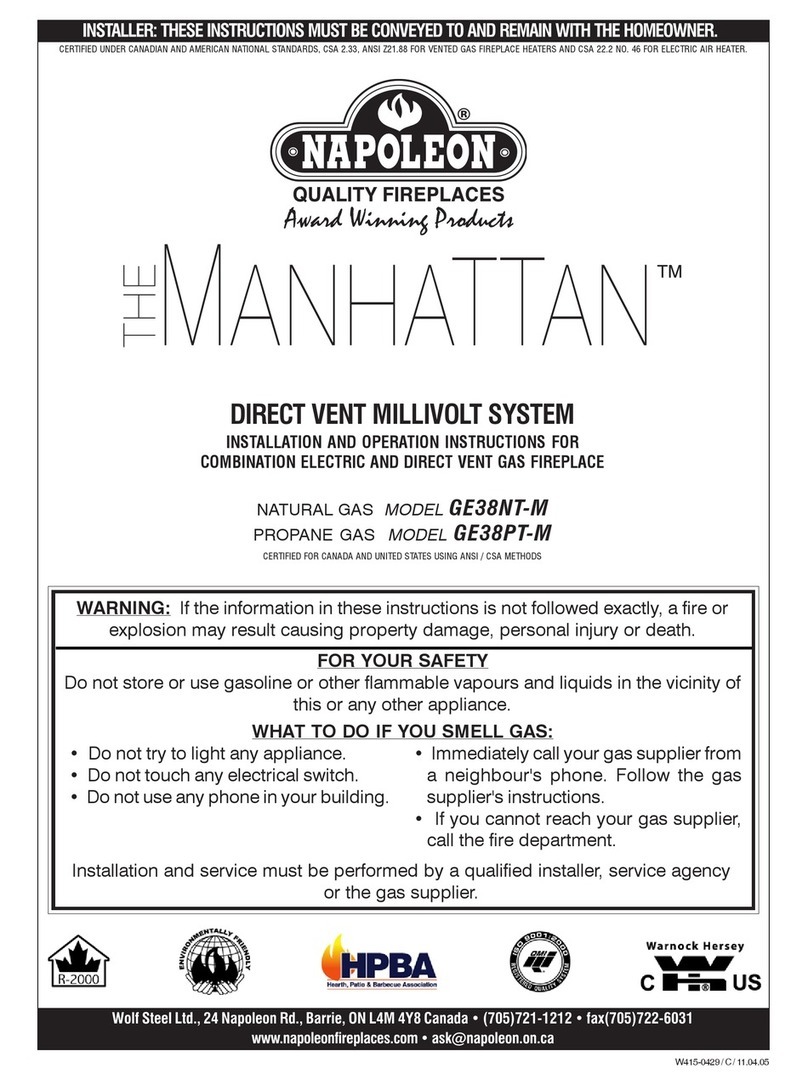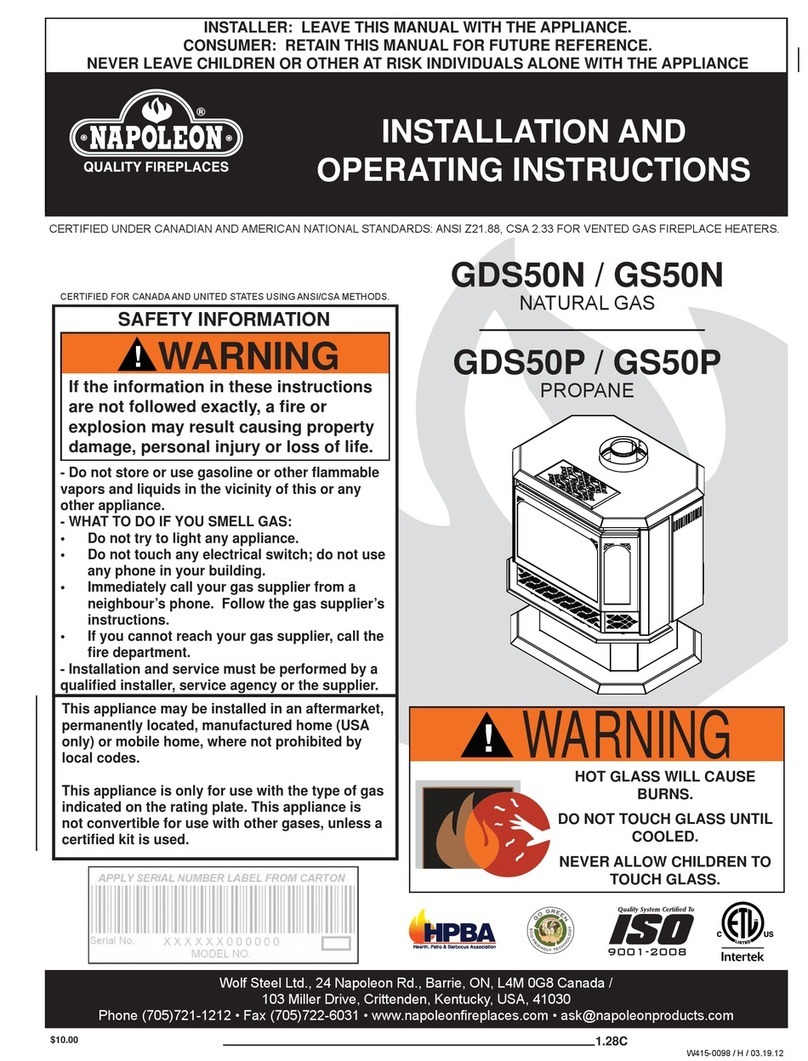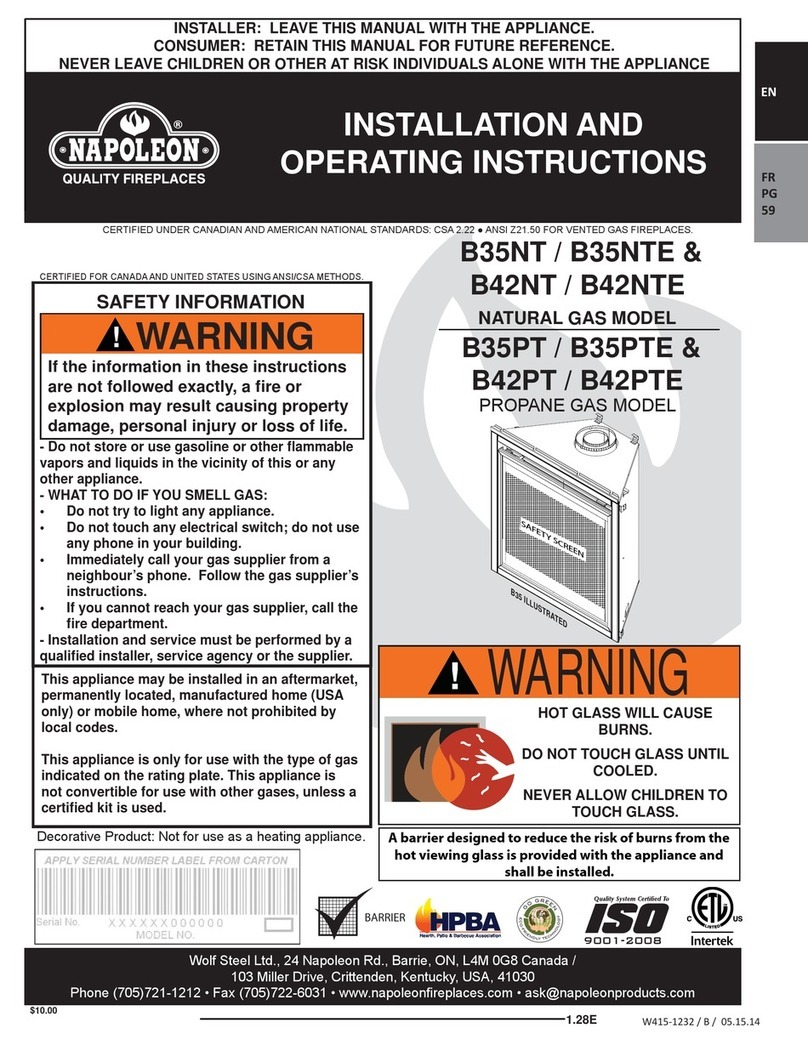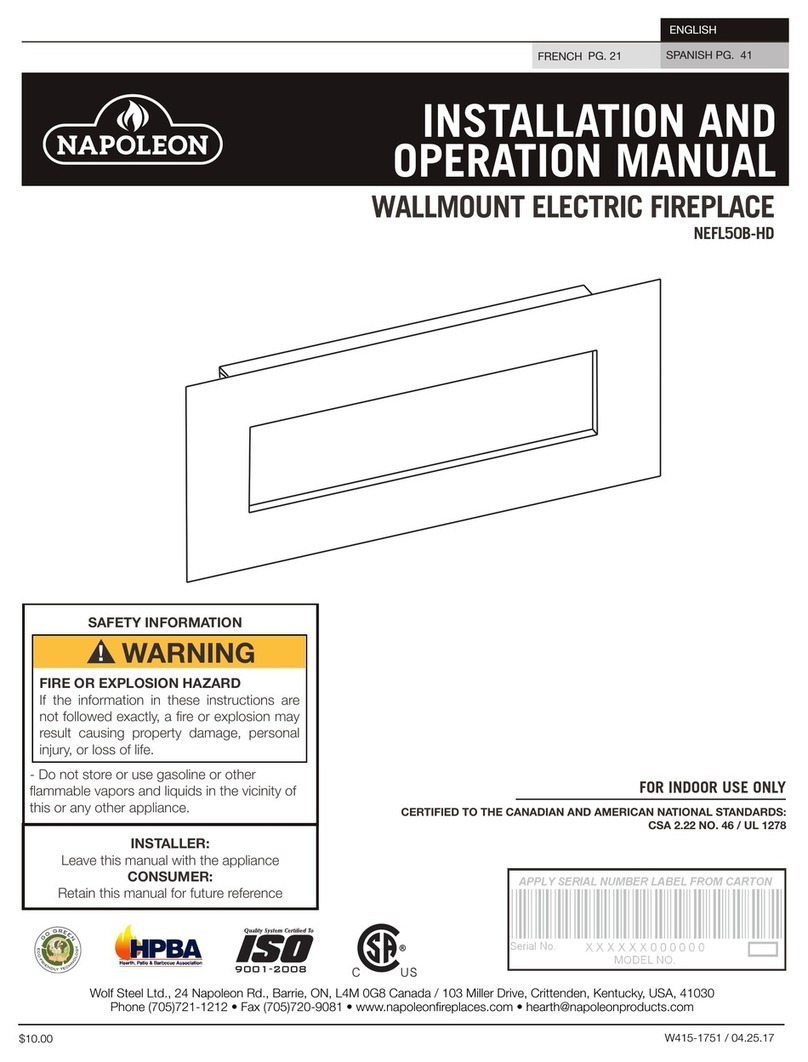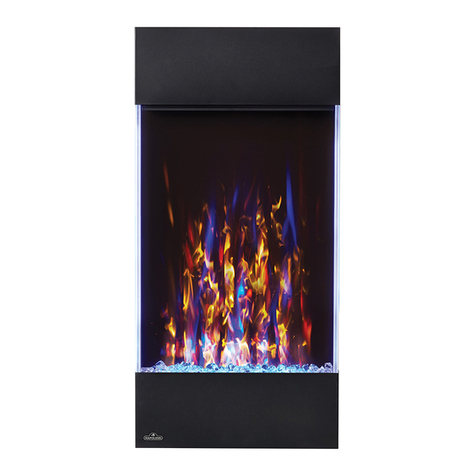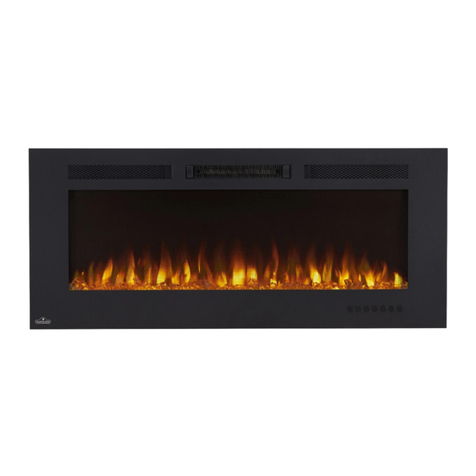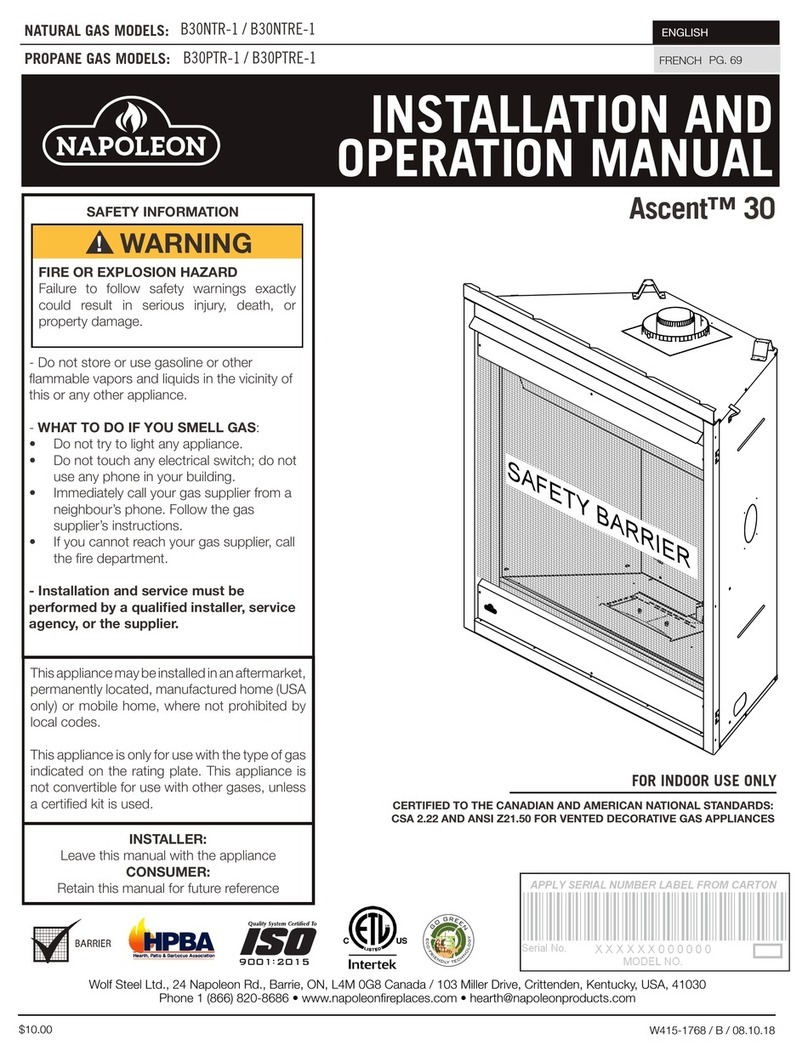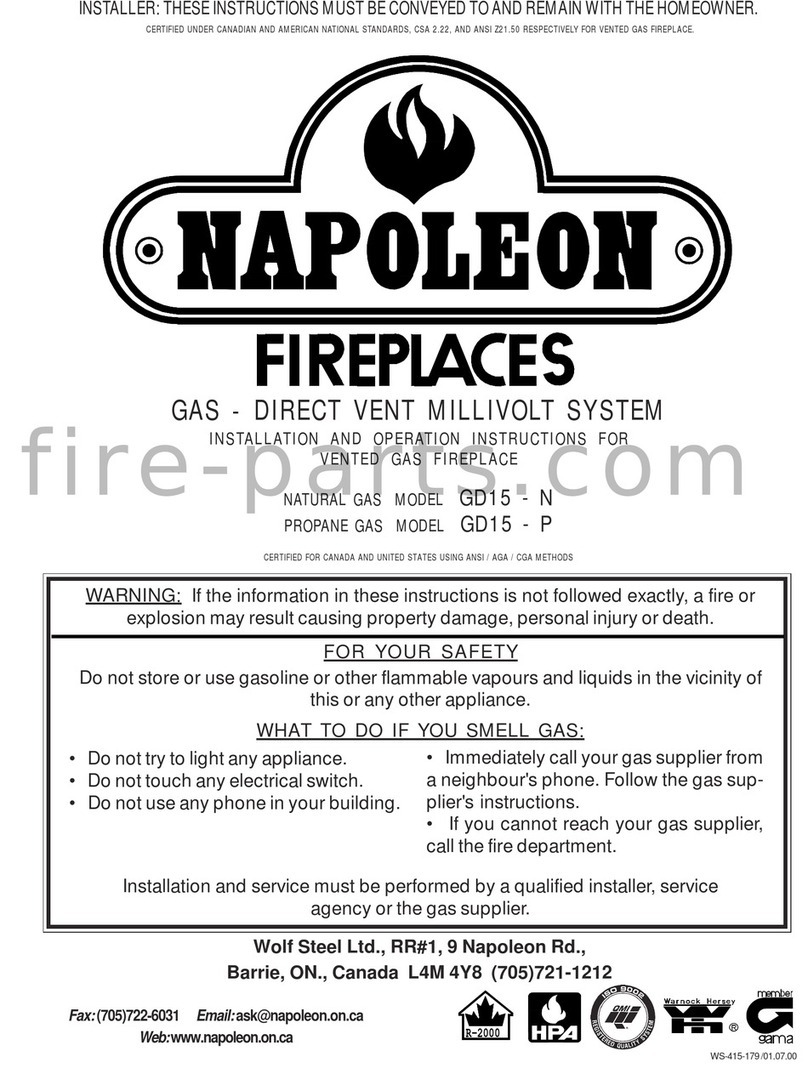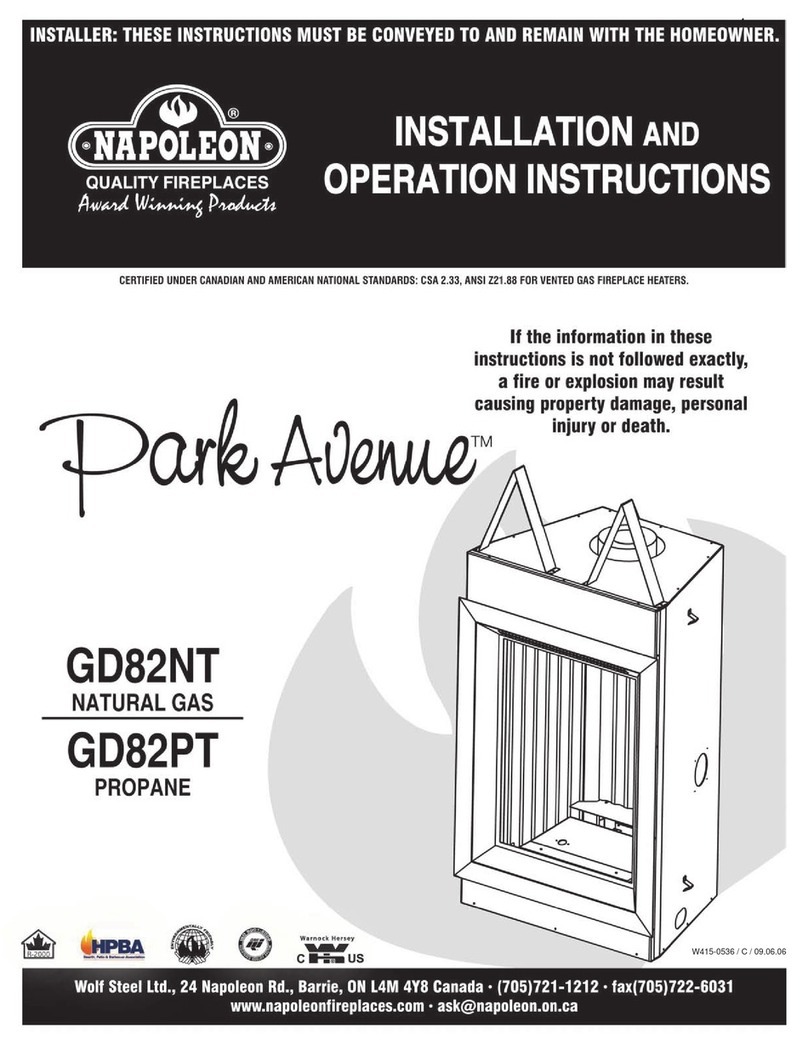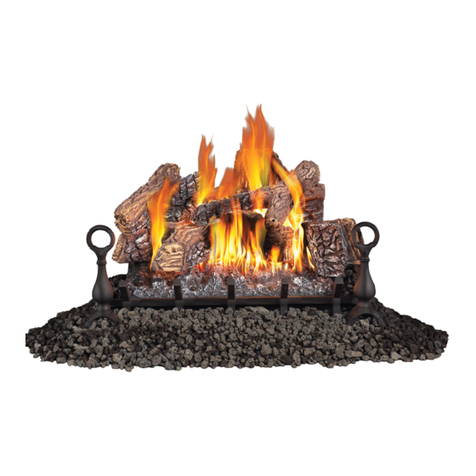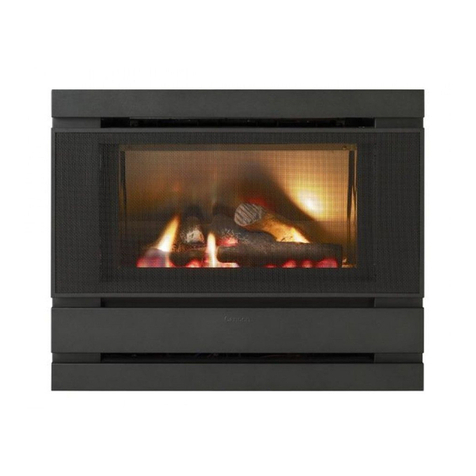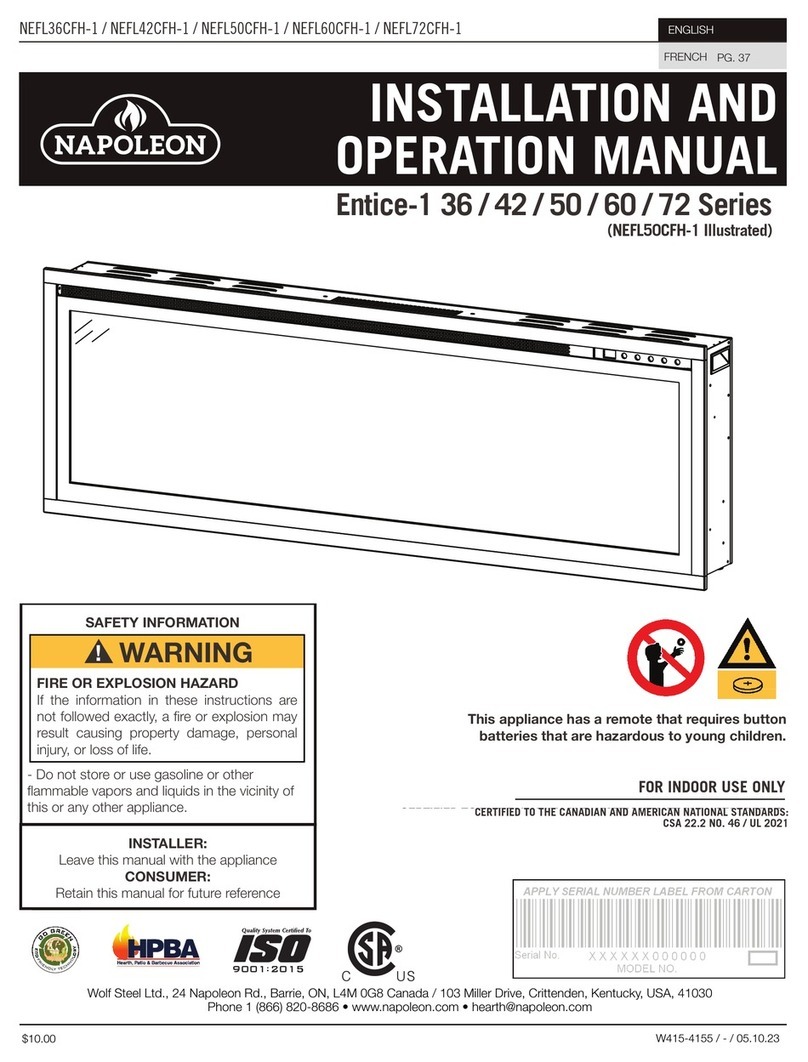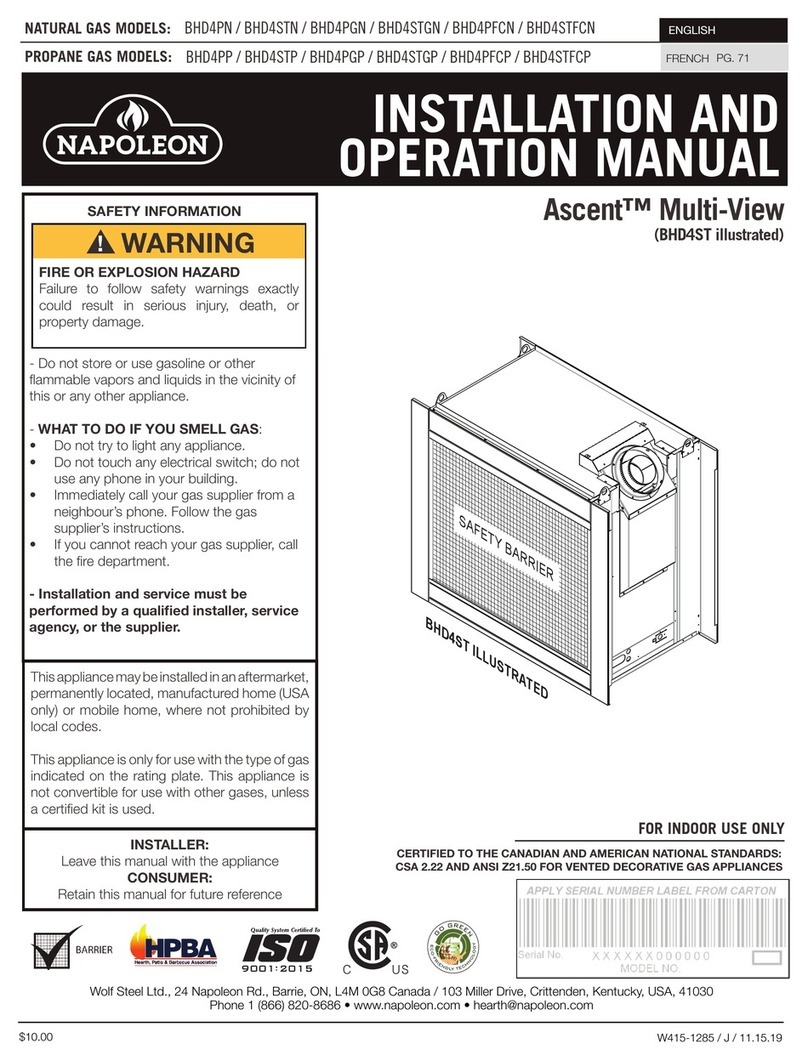
6
W415-0662 / A / 03.04.09
VENT INSTALLATIONS
Vent lengths that pass through unheated spaces (attics, garages, crawl spaces) should be insulated with the insulation
wrapped in a protective sleeve to minimize condensation.
Provide a means for visually checking the vent connection to the fireplace after the fireplace is installed.
Do not allow the inside liner to bunch up on horizontal or vertical runs and elbows. Keep it pulled tight. A1¼" air gap between
the inner and outer liner all around is required for safe operation.
Use a firestop, vent pipe shield or attic insulation shield when penetrating interior walls, floor or ceiling.
When venting straight out the back, only the rigid vent can be used. DO NOT USE FLEXIBLE VENT. For all other venting
configurations, flexible vent is acceptable.
For safe and proper operation of the fireplace follow the venting instruction exactly.
Deviation from the minimum or the maximum vertical vent length can create difficulty in burner start-up and/or
carboning.
A terminal shall not terminate directly above a sidewalk or paved driveway which is located between two single
family dwellings and serves both dwellings. Local codes or regulations may require different clearances.
In order to avoid the possibility of exposed insulation or vapour barrier coming in contact with the fireplace body,
it is recommended that the walls of the fireplace enclosure be “finished” (ie: drywall/sheetrock), as you would
finish any other outside wall of a home. This will ensure that clearance to combustibles is maintained within the
cavity.
Wolf Steel, Simpson Dura-Vent, Selkirk Direct Temp and American Metal Amerivent venting systems must not be
combined.
Under extreme vent configurations, allow several minutes (5-15) for the flame to stabilize after ignition.
FOR SPECIFIC VENTING PARAMETERS, REFER TO
PAGES 9-12.
With flexible venting, in conjunction with the various terminations, use either the 5 foot Vent Kit GD220 or the 10 foot Vent
Kit GD330.
Foroptimum flame appearanceand fireplace performance,keep the ventlength and numberof elbows to a minimum.The air
terminal must remain unobstructed at all times. Examine the air terminal at least once a year to verify that it is unobstructed
and undamaged.
Horizontalruns mayhave a 0"rise perfoot inall cases usingWolfSteel, SimpsonDura-Vent,Selkirk DirectTemp,orAmerican
Metal Amerivent rigid vent components and Wolf Steel flexible vent components.
For optimum performance, it is recommended that horizontal runs have a minimum 1/4" rise per foot when using Simpson
Dura-Vent, Selkirk Direct Temp, American Metal Amerivent or Wolf Steel rigid vent components and a minimum 1" rise per
foot when using Wolf Steel flexible vent components.
HORIZONTAL VENT SECTIONS
A minimum clearance of 1" at the bottom and sides
and 2" at the top of the vent pipe in all horizontal
runs to combustibles is required. Use firestop sleeve
assembly W010-1777 (supplied).
BGD33GD33
VERTICAL VENT SECTIONS
Aminimum of 1" all around the vent pipe on all vertical
runs to combustibles is required.Use firestop spacer
W500-0096 (not supplied).
HORIZONTAL VENT SECTIONS
A minimum clearance of 1" at the bottom and sides
and 2" at the top of the vent pipe in all horizontal
runs to combustibles is required. Use firestop sleeve
assembly W010-1777 (supplied).
VERTICAL VENT SECTIONS
Aminimum of 1" all around the vent pipe on all vertical
runs to combustibles is required.Use firestop spacer
W500-0096 (not supplied).
For vent systems that provide seals on the inner exhaust flue, only the outer air intake joints must be sealed using a red high
temperature silicone (RTV). This same sealant may be used on both the inner exhaust and the outer intake vent pipe joints
of all other approved vent systems except for the exhaust vent pipe connection to the fireplace flue collar which must be
sealed using the black high temperature sealant Mill Pac. When using Wolf Steel venting components, use only approved
Wolf Steel rigid / flexible components with the following termination kits:Wall Terminal Kit GD222, or 1/12 to 7/12 Pitch Roof
Terminal Kit GD110, 8/12 to 12/12 Roof Terminal Kit GD111, Flat Roof Terminal Kit GD112 or Periscope Kit GD201 (for
wall penetration below grade).
